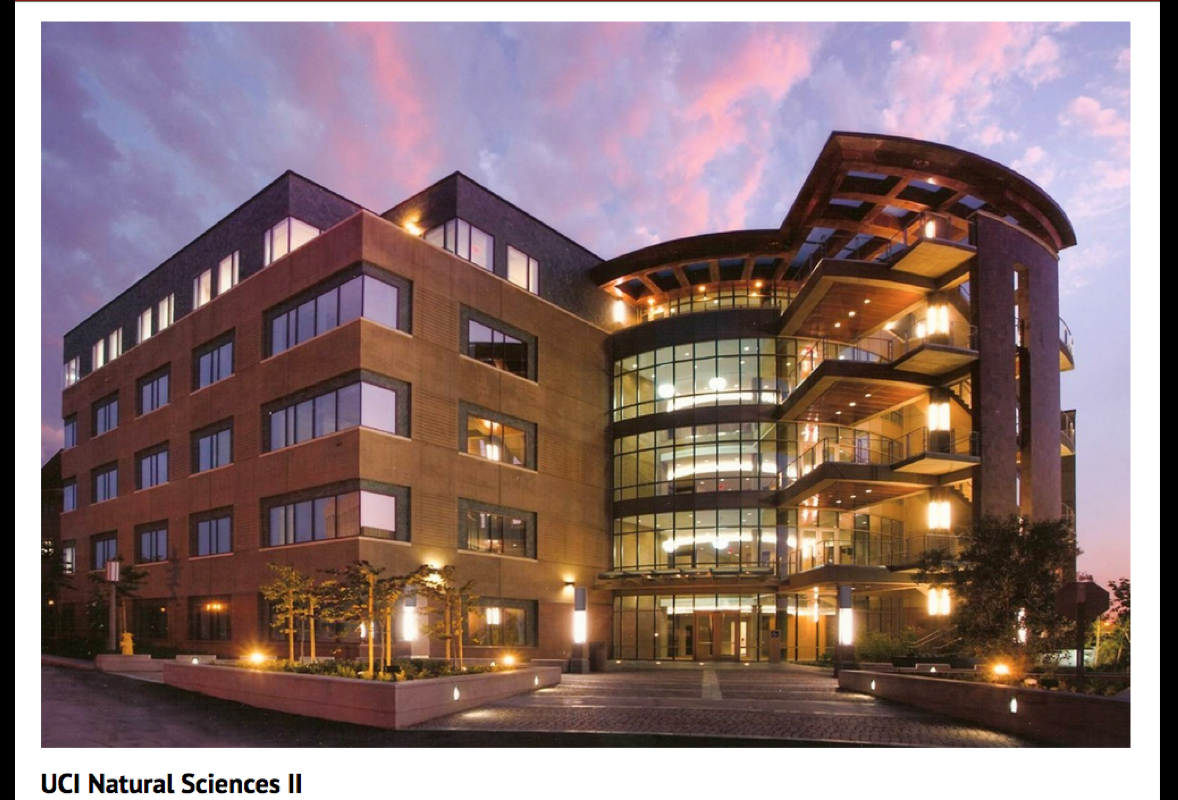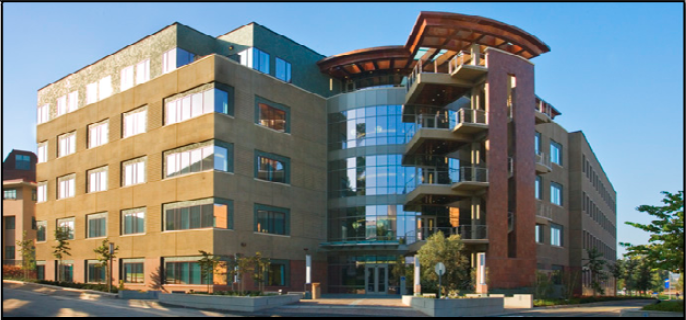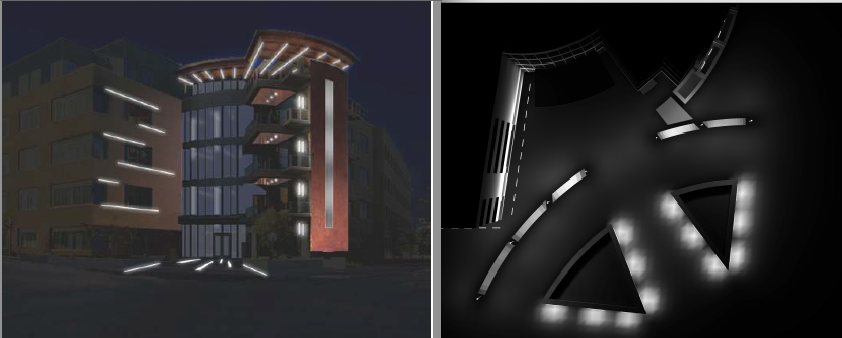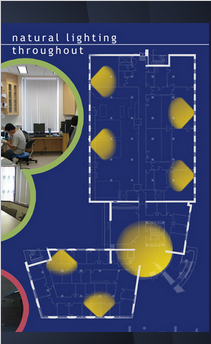

History
The Natural Sciences Building Unit 2 was completed back in Sept. of 2008 which was designed by the Carrier-Johnson Architects – Gary Hipolite, Philip Pipal. Their preliminary plans of this building date as far back as July of 2001.
Now, the 69,000 sq. ft. building provides research laboratories, faculty and graduate student offices, and conference rooms for the School of Biological Sciences and the Departments of Chemistry and Physical Sciences. This building was originally constructed to provide extra space for laboratories/ research facilities due to the increase of student population which was resulting in a lack undergraduate research participation.
The construction of this building consisted of a two component project; 1. The construction of a laboratory building and 2. the expansion and renovation of the existing animal facility. Aside from the construction design of the building itself, the conceptual site design required an understanding of vehicular traffic, parking, pedestrian traffic patterns and bike paths all which run alongside the buildings edges.
Architecture
The Natural Sciences II building is positioned in the Physical Science quad at the edge of the broad landscaped main ring mall which links the six academic quads encircling the park. The building is within easy walking distance of the Biological Science and Engineering quads. As such, it serves as a ‘melting pot’ of ideas and a catalyst for innovative interdisciplinary research collaborations.
- The building includes a four – story laboratory and classroom wing and a five story office wing which form the shape of an “L”, with a two story entrance lobby between the two
- A small outdoor courtyard is sheltered on two sides by the wings of the buildings.
- The architecture is modern and consistent with existing surrounding buildings and the master plan of the campus.
- The building is taller than all surrounding buildings. The roof is vacant except for an equipment canopy area above the laboratory wing, there is also solar panels on the roof.
- The fifth floor features a balcony with access to the main stair.
- The welcoming elements consist of a lobby as well as a courtyard and finally entry plaza.
- The main vertical stairwell, four story curtain wall, lobby levels within the building, vegetation in the plaza and paving materials are all focal points.
- Sleek, modern aesthetic, own building identity, vertical + radial motion, transperency, warm exterior vs cool interior.
- Materials: Vermont slate tiles, red granite, copper canopy, glass entry canopy.
- Known for really grand facades like the engineering hall and medical center clinical lab.
Lighting/ Electrical /AC/ Water Information:
This building was considered generally modern at the time it was built and this building was designed to reduce power consumption. One nice thing to know is that this building did not need new storm drains as runoff would flow into existing catch basins along Bison Ave. This building was also designed to have dramatic night lighting,which is simple and inexpensive (as we can see in the above picture). The dramatic night lighting was to show the beauty of the building as a whole and to let staff members and undergraduate students pass by the building safely.
The building has solar panels on top roof of the entire building to absorb energy to power the building with light. The result: lower energy costs. Not only does it have solar panels but it also has a diesel generator that provides emergency backup power to the building.
The image above shows the building lights that glare at night. On your right you can see that the building has triangular shape lighting outside of the building, and what helps power it up to light up at night is the underground distribution of power.
P.S. I do encourage all of you to pass by the building at night to enjoy the nice lighting of the building.
This image above show’s the amount of electrical lighting within the first floor of the inside of the building.
The building orientation allows daylighting to be a significant source of light in many spaces, further reducing artificial lighting demand and overall energy use during the day. In other words,The building is designed to maximize interior illumination via natural lighting.
Other Facts:
- The lighting in the lobbies and in Laboratories have motion sensor lighting.
- The building has Energy Efficient Filtration which is better Indoor Air Quality which improved indoor air quality.
- The building has a controlled air ventilation throughout the building to monitor indoor air quality. So incase of an emergency Ex: a chemical spill a air ventilation goes throughout the lab that increase air change rates to its maximum
- Also there is sensor ventilation throughout the laboratories so if its stuffy it will allow for air change rate but only when its not occupied.
LINKS:
Architecture of Building: UCI Natural Sciences 2
Lighting / Electrical /AC/ Water Info
Images
Loading….




The staircase on the outside is a particularly interesting part of this building that I’m glad the group pointed out. Also, the emphasis on the lighting design of the building, I think, brought forth a new perspective in understanding the architecture that I don’t think I would have thought of before.
I thought that this building was beautiful. The structure and design of the main entrance was simply astonishing. I walk by this building at night every week and it is even more wonderful when it is lit up. I liked this tour very much because the group took us throughout the entire building and even to the roof. By getting to see most every inch of the building i can truly appreciate it in its entirety.
A beautiful building that I pass by usually at night when the external lights are on and the building is illuminated under the night sky. Nice tour you guys focused on the lighting and energy-efficient aspects of the NSII building and reflected the contemporary views of trying to reduce ways of expending so much energy.
The day that our class went on this tour, the people group giving the tour mentioned the word “modern” design. I just want to point out that although it is reasonable to use the word modern for the present and the living moment, in subjects such as architecture the words are really sensitive and can mean something else than what one meant to say in the first place. Having said that, I feel like this building is more of a conventional rather than a modern architected design.
I walk by this building frequently; it wasn’t until the tour that I got the opportunity to fully explore it. Usually I only enter this building to attend office hours and workshops and I’ve failed to appreciate it’s true beauty. I find this building most beautiful at night time and find it an inspiration of hope as I walk back to my car. I love that this group brought us to the rooftop, which was really a breathtaking view.
Natural Sciences II is an interesting building, usually overlooked by undergraduates who usually are in Biological Sciences and Physical Sciences. It is interesting considering that the main stairwell is such a prominent figure in the facade of the building, and that the main entrance is arcing. Now that I think about it, NSI and NSII seem to be like two pieces of a puzzle, with the protruding arch of NSII going into the depressed front of NSI.
This was a very intresting building, but I have a question. Why did you guys mainly focus on the lighting of the building? However, you guys did a great job.